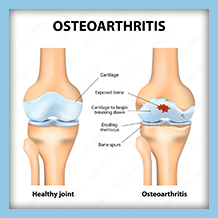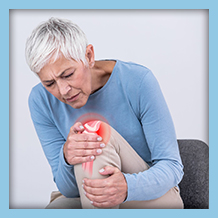

Fortunately, several treatments are available to ease symptoms and prevent further joint degradation. If you are suffering from osteoarthritis or know someone who is, here is everything you need to know about this painful joint disease.
What is Osteoarthritis?
Osteoarthritis is a degenerative joint disease that affects the cartilage in the joints. The ends of the bones are covered with cartilage, and when this cartilage wears down, it can cause pain and inflammation. Osteoarthritis is the most common form of arthritis, and symptoms include joint pain, stiffness, and swelling.
Causes of Osteoarthritis
Osteoarthritis is more likely to develop as you age. Women are also more likely to develop osteoarthritis than men. There are many different causes of osteoarthritis. Genetics plays a role in who develops osteoarthritis and how severe it becomes. Obesity puts extra stress on joints and can increase the risk of osteoarthritis, especially in the knees. Joint injuries, repetitive motions, and certain diseases can also lead to osteoarthritis.
Symptoms of Osteoarthritis
Symptoms of osteoarthritis can include joint pain and stiffness. The pain is often worse after you have been inactive for a while, such as when you wake up in the morning. You may also have pain when you use the joint or put weight on it.
The affected joint may feel warm to the touch. Joints may also creak or grind when moved. These symptoms are caused by the loss of cartilage in the joint.
Who is at Risk for Osteoarthritis?
People of all ages can be affected by osteoarthritis, but it is most common in adults over 65. The condition is also more common in women than men. People who have a family history of osteoarthritis are also at greater risk. Other risk factors include joint injury, obesity, and repetitive stress on the joints.
How Is Osteoarthritis Diagnosed?
Osteoarthritis is diagnosed by a doctor, usually an orthopedic surgeon, who will take a medical history and perform a physical examination. X-rays may help to diagnose osteoarthritis, but they do not show the early changes of the disease. MRI (magnetic resonance imaging) or CT (computed tomography) scans may look for early signs of osteoarthritis. Blood tests are not generally used to diagnose osteoarthritis.
Osteoarthritis Treatment Options
There are several treatment options available for osteoarthritis, which may help to reduce pain and improve joint function. Joint protection, weight management, and exercise are often recommended as treatments for osteoarthritis. Medications such as pain relievers and anti-inflammatory drugs may also help relieve pain. In some cases, surgery may be necessary to treat osteoarthritis.
What Medications Are Used to Treat Osteoarthritis?
Several medications can be used to treat osteoarthritis, depending on the severity of the condition. For milder cases, over-the-counter pain relievers may be enough to relieve joint pain. More severe cases may require prescription medications, injections, or surgery. The goal of treatment is to relieve pain and improve function in the affected areas.
Are There Alternative Treatments for Osteoarthritis?
Several alternative treatments for osteoarthritis can help people with the condition relieve pain and improve their quality of life. These treatments include things like acupuncture, massage, and dietary supplements. While there is no cure for osteoarthritis, these alternative treatments can help to slow down the progression of the disease and improve the cartilage in the joints. This can lead to some pain relief for people with osteoarthritis.
How Does Weight and Exercise Impact Osteoarthritis?
Exercise and weight management are important considerations for people with osteoarthritis. Excess weight puts extra strain on weight-bearing joints, such as the knees and hips, and can worsen joint pain. On the other hand, regular exercise can help reduce pain and improve joint function. Exercise also helps maintain strong muscles and bones, taking some of the strain off your joints.
Contact an Orthopedic Office Today
Osteoarthritis affects the joints in our bodies, which can make it painful and difficult to move around. Luckily, several treatments are available to combat osteoarthritis symptoms and ease joint pain. Health care providers will typically recommend a course of treatment based on your symptoms and other risk factors for osteoarthritis.
If you suffer from osteoarthritis, schedule a consultation with a healthcare provider today. While there is no cure for osteoarthritis, the right treatment plan can help to improve quality of life, reduce pain and stiffness, and restore function. Contact Orthopedic Laser Spine Surgery at (855) 853-6542 or fill out our online form.
